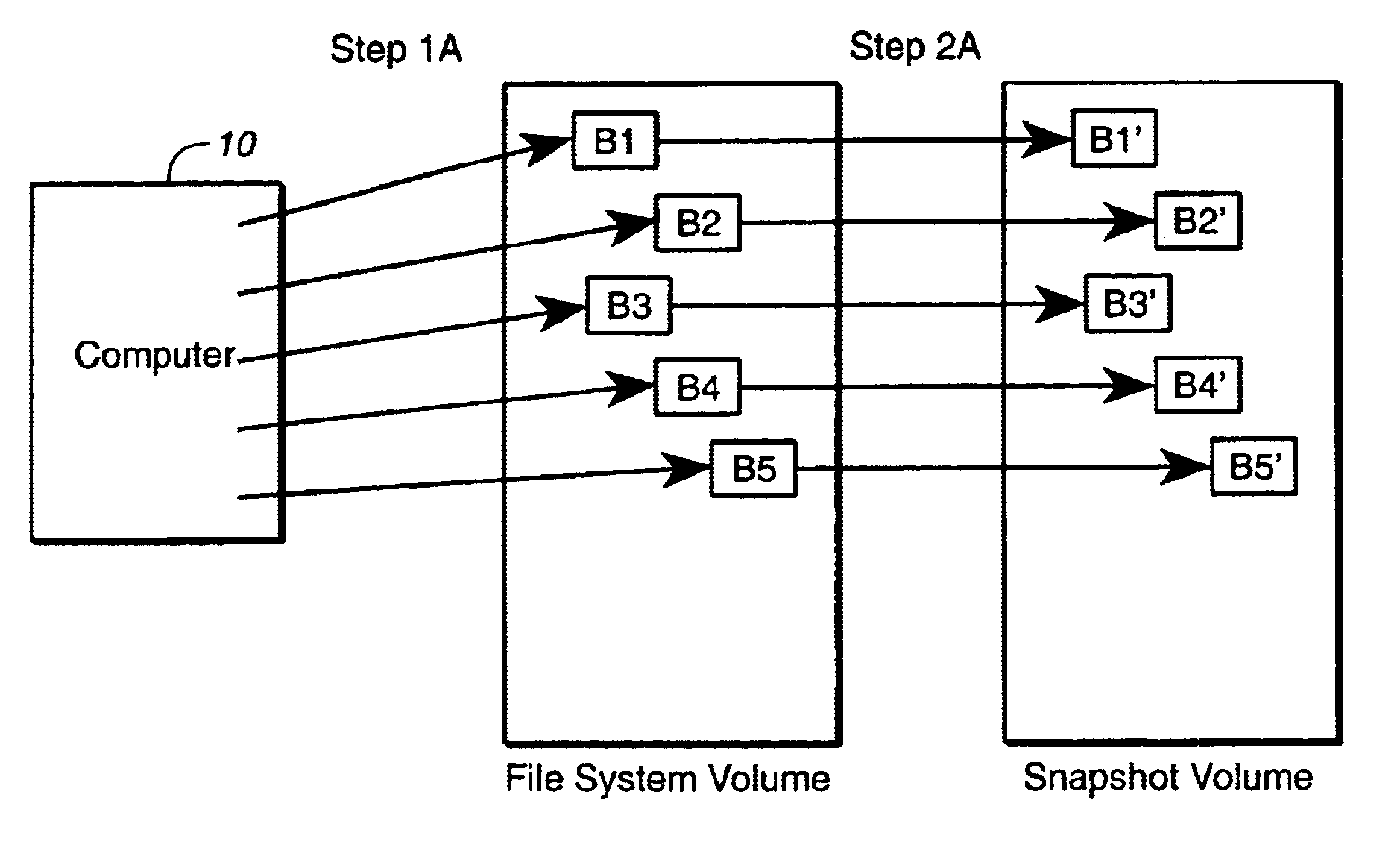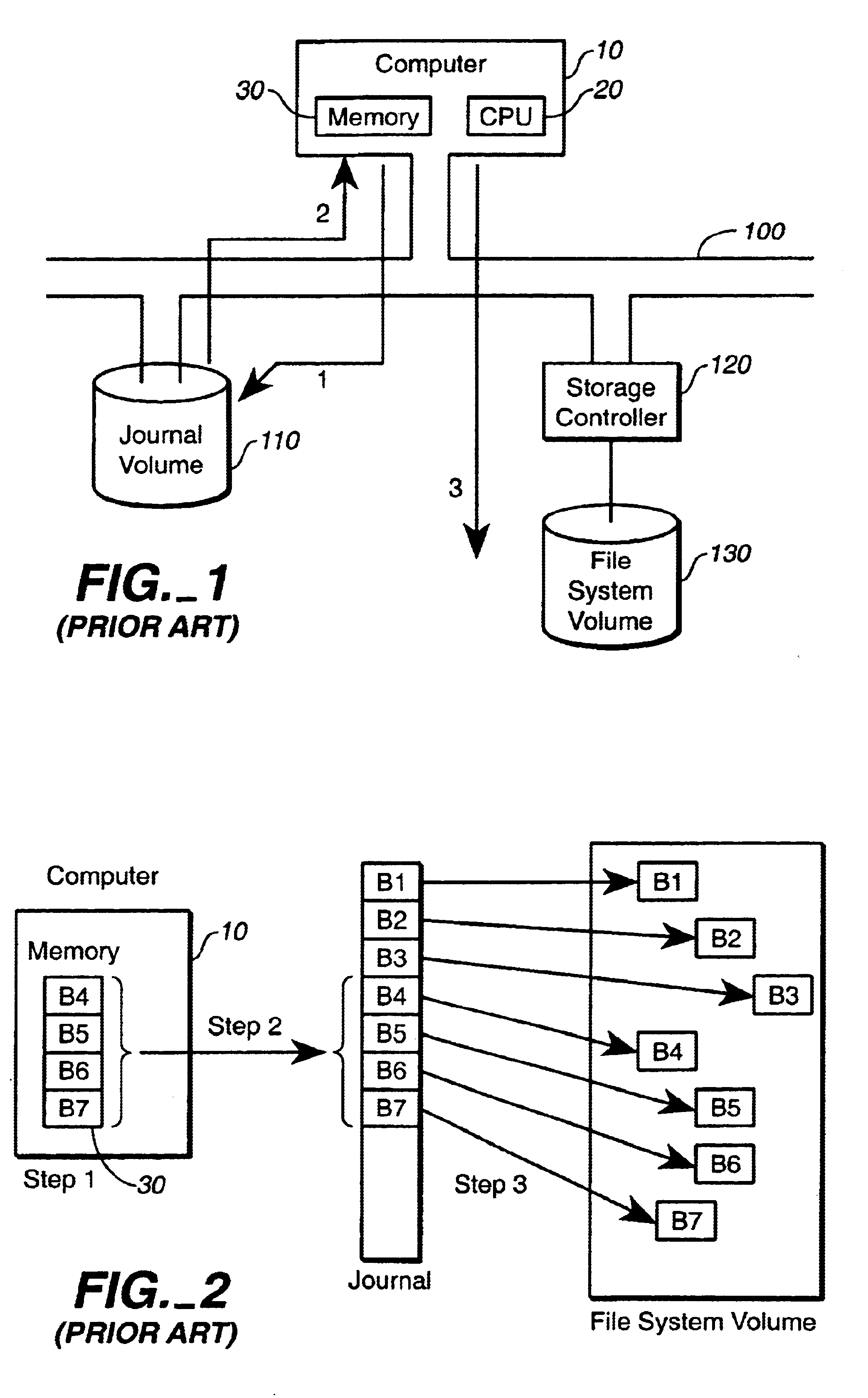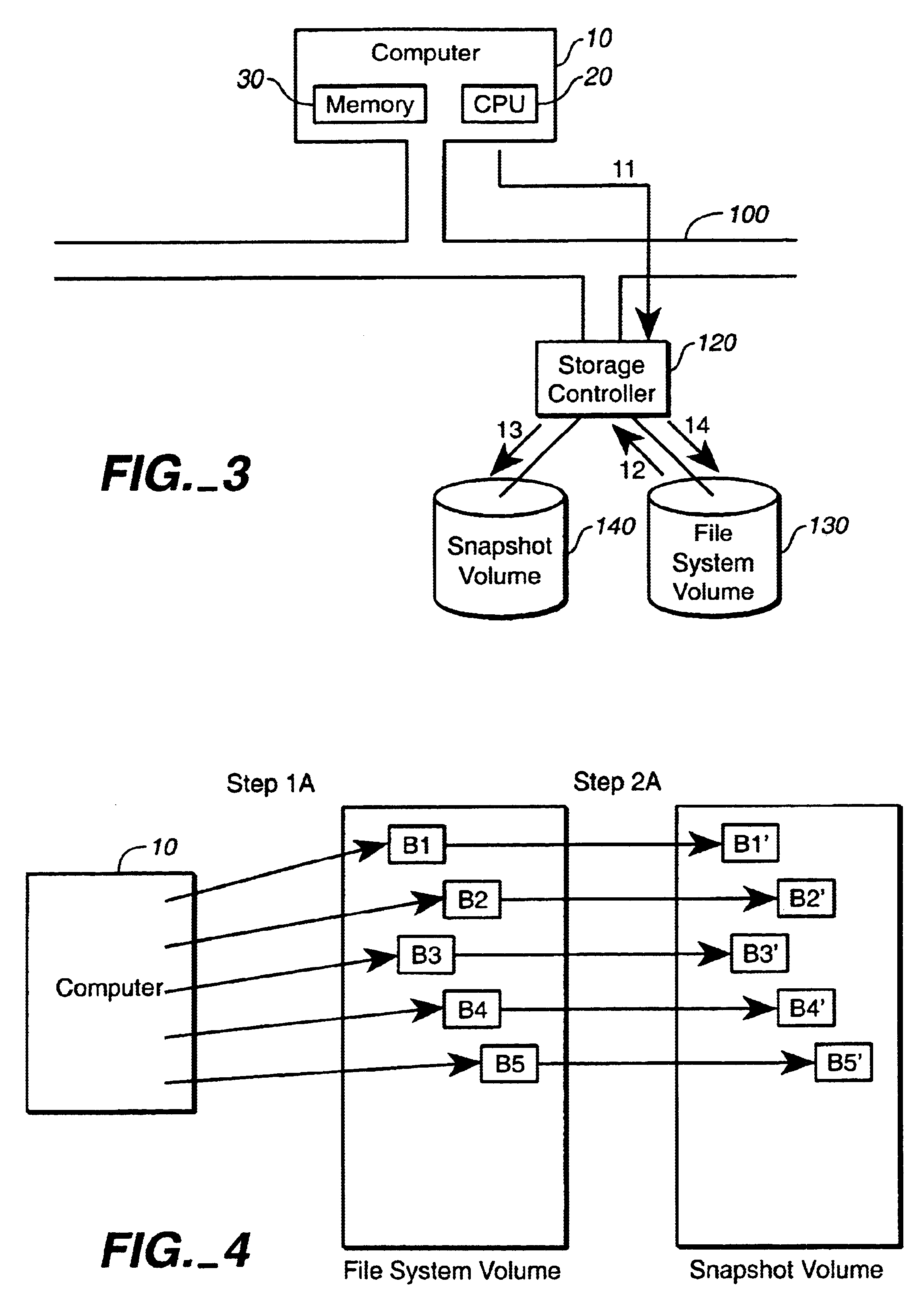Method for the acceleration and simplification of file system logging techniques using storage device snapshots
- Summary
- Abstract
- Description
- Claims
- Application Information
AI Technical Summary
Benefits of technology
Problems solved by technology
Method used
Image
Examples
Embodiment Construction
The present invention is directed to a computer system recovery system which uses hardware to implement journaling or logging functions and which minimizes the number of block data transfers on the system bus for file updating and recovery.
The following terms are used in this document:
Cache memory: High-speed, low-access memory.
Copy-on-write: A method for implementing snapshots of storage volumes, wherein the original contents of the snapshot's base volume are not copied to a separate storage location until an attempt is made to overwrite them.
Inode: A data structure that represents a file within a filesystem consisting of a file's metadata and the numbers of the blocks that can be used to access the file's data.
Metadata: The data an inode stores concerning file attributes and directory entries.
FIG. 3 illustrates an embodiment of the present invention having a computer system which includes a personal computer, work station, minicomputer, mainframe, supercomputer, or the like and ac...
PUM
 Login to View More
Login to View More Abstract
Description
Claims
Application Information
 Login to View More
Login to View More - R&D
- Intellectual Property
- Life Sciences
- Materials
- Tech Scout
- Unparalleled Data Quality
- Higher Quality Content
- 60% Fewer Hallucinations
Browse by: Latest US Patents, China's latest patents, Technical Efficacy Thesaurus, Application Domain, Technology Topic, Popular Technical Reports.
© 2025 PatSnap. All rights reserved.Legal|Privacy policy|Modern Slavery Act Transparency Statement|Sitemap|About US| Contact US: help@patsnap.com



